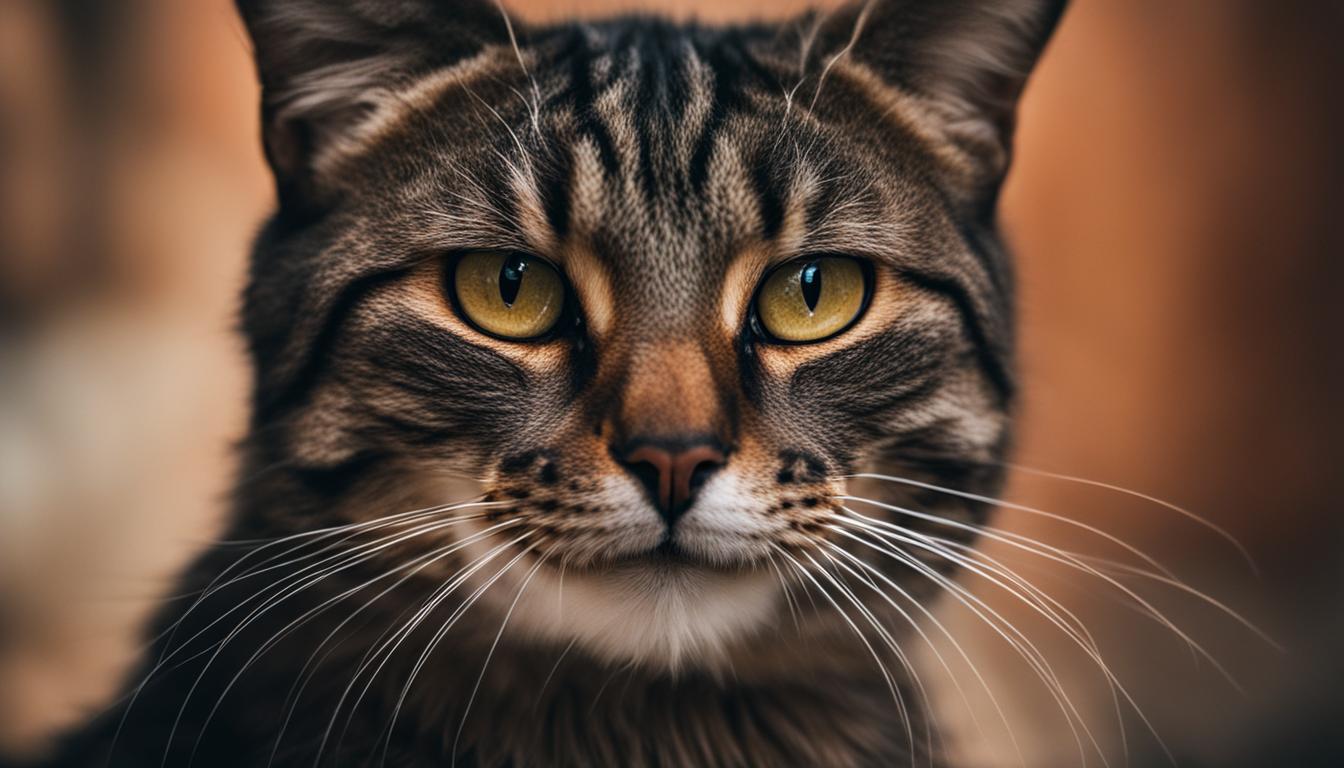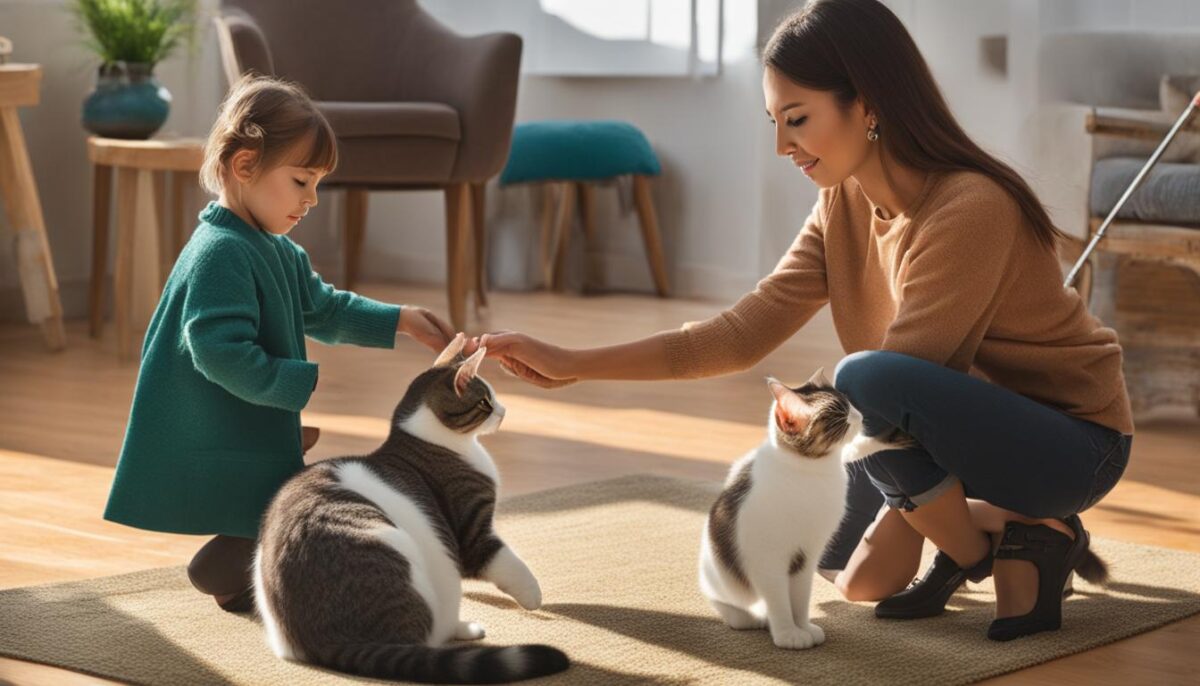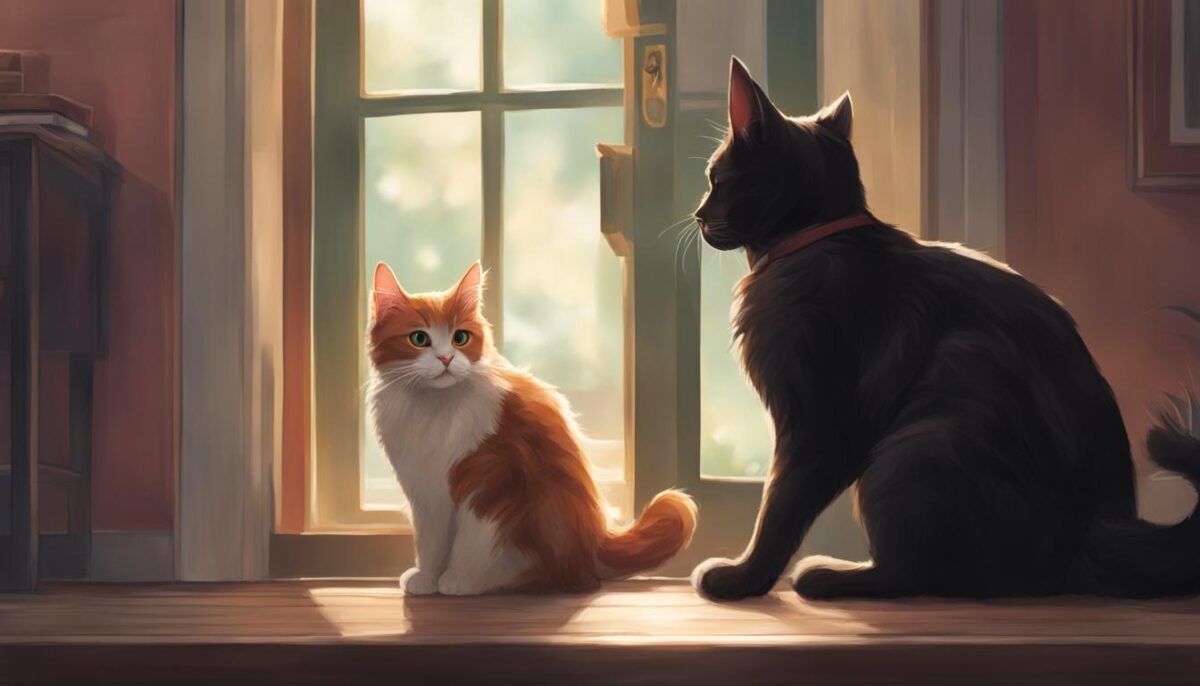Do you ever wonder why your fluffy friend gives you a little nip? Cat behavior is interesting! Your feline companion might bite for many reasons. They could feel love, fear, or they just want to play. Sometimes, a bite is a cat’s way of asking for something – like “please feed me” or “I need space”.
Cats are great friends, but they can’t talk. So, when they bite, they’re trying to tell us how they feel. If your cat is hissing or looks scared with big, round eyes, try giving them some alone time. Cats also do ‘love bites’. Those are gentle and mean “I like you”. But, if petting makes your cat bite, they might just be overstimulated.
Understanding why your cat bites helps you both get along better. So, next time your cat nips, think about what they might be feeling or needing. And remember, they love you even when they bite!
Key Takeaways
- Cat bites can mean love, fear, a play signal, or a cue for help.
- Big, round eyes or hissing may signal that your cat is scared.
- ‘Love bites’ are soft nips showing affection.
- Watch for signs your cat is getting too much petting to avoid bites.
- Good play habits with toys help prevent biting behavior.
Deciphering Love Bites and Signs of Affection
Have you ever felt a tiny pinch from your furry friend? That’s what we call a cat’s love bite. When your cat nibbles on you gently, it’s a special way they say “I like you a lot!” Cats talk with actions, and this is a cat communication trick you can look for. Love bites are just one of the cuddly ways your cat shows they care.
Let’s learn how to tell when our cats are giving us love bites, or little kisses. While we cover these signs, watch for times your cat might also need a little break from being close and snuggly.
Gentle Nibbles as a Form of Communication
Cats don’t talk with words like we do. Instead, they might give a soft nibble to get our attention. This is part of cat affection. Maybe they want some treats, or they want you to throw their favorite toy. Remember, they do this nicely, not to be mean, but to say “Hey, play with me!”
Understanding Your Cat’s Purring and Kneading Alongside Bites
Is your cat purring and kneading, making little paws like they are kneading dough? That’s another adorable thing cats do when they’re really happy. If they give you a nip then, it’s like they are mixing in a bit of love bite to say “You’re the best!” Understanding purring and kneading alongside those nips helps you know just how much your cat loves you.
| Cat Affection Signs | What It Means |
|---|---|
| Gentle Bites | Your cat feels close to you and is saying “I love you.” |
| Kneading Paws | They are super happy and relaxed with you. |
| Loud Purring | This vibrating noise means “I’m really happy right now!” |
| Bringing Toys | They want to play and spend fun time with you. |
| Rubbing Against You | It’s like a cuddly hug in cat language! |
Next time your kitty gives you a little bite, think about what they might be trying to say. Could they be asking for a snack, or do they just want to tell you that you’re their best friend? Now you know a bit more about cat affection. Keep loving your purring pal, and they’ll keep showing you their love, too!
Identifying Fear and Anxiety in Your Feline Companion
Have you ever noticed your cat acting a bit strange? They might be dealing with cat anxiety or fear. Cats are smart at hiding when they’re upset, but there are stress signs in cats that you can watch for. If they seem scared, give them time and space to feel safe again. It’s important to know these signs so you can help your furry friend feel better.
When cats get scared or nervous, they might not just find a hiding spot. They could show defensive cat behavior, like biting, to protect themselves. It’s not because they are being mean; it’s their way of saying they feel unsafe. To understand better, let’s look at how to tell if a cat might be stressed or scared.
| Sign of Anxiety or Fear | What It Looks Like | How You Can Help |
|---|---|---|
| Hiding | Your cat keeps hiding under the bed or other spots. | Let them stay in their safe spot until they come out. |
| Hissing or Growling | Your cat makes a hiss or growl when you come near. | Give them space and speak in a soft, calming voice. |
| Puffing Up Fur | Your cat’s fur stands up, making them look bigger. | Stay calm yourself. This can help them calm down too. |
| Running Away | They run or jump away suddenly when you try to pet them. | Don’t chase them. Wait for them to return when they’re ready. |
| Scratching or Biting | Your cat might scratch or bite if they feel cornered. | Never scold them. Instead, back off and give them some time alone. |
Remember, your cat is part of your family, and just like us, they can have good and bad days. If you see any signs that they are stressed or scared, be patient and give them the love they need. This can make your bond even stronger!
The Paradox of Petting: When Affection Leads to Bites
Sometimes when you are petting your cat, they might surprise you with a quick bite. This doesn’t mean they don’t like the petting. It might just be too much for them. Cats like being petted, but if it’s a lot all at once, they can feel what’s called cat overstimulation.
Recognizing Signs of Petting Overstimulation
Be on the lookout for signs that your cat is getting too much petting! If your furry buddy’s tail starts to thump or they look very still, they might be telling you, “I need a little break.” Another hint is if they suddenly stop purring, even though they were happy a second ago. This is all part of feline communication—they have their own way of speaking to us without words.
| Petting Time | Happy Signs | Too Much Signs |
|---|---|---|
| Beginning | Purring | – |
| During | Leaning in | Stiff body |
| Ending | Relaxed look | Whiskers forward, tail thumping |
Reducing Conflicts During Your Interactions
When you and your cat are spending time together, it’s important to have happy moments without any petting aggression. If you notice any signals that petting time is getting too intense for your cat, give them some space. This helps create positive cat bonding moments and tells your cat that you understand and respect their feelings.
Remember, keeping an eye on how your cat is feeling during petting can make all the difference. This means less chance of a surprise nibble and more chance for lovely snuggles with your cat!
Why Does My Cat Bite Me: Frustration and Miscommunication
Experiencing cat frustration or biting behavior with your pet can be puzzling. But don’t worry, it’s usually because they’re trying to tell you something, and it’s our job to figure out what that is. Sometimes your kitty might give you a little nibble if they want to play and you seem too busy. Or maybe they want some alone time but you miss the signs. Decoding cat signals is all about understanding these actions since they can’t use words.
Let’s try decoding the biting behavior. A nip might be your cat’s way of saying,
“Hey, listen up! I need something.”
It could be that they’re hungry, they’re stressed, or they just want to be close to you. Understanding these signals helps prevent
feline miscommunication
and those surprise bites.
| Signal | What Your Cat Might Mean |
|---|---|
| Tail flicking | “I’m getting annoyed.” |
| Ears back | “I’m not really happy right now.” |
| Soft nip | “Pay attention to me, please.” |
| Hiding or avoiding | “I need my space.” |
| Purring then biting | “I loved the petting but it’s too much now!” |
Remember, your cat loves you, and they just want to be understood. When you get better at decoding cat signals, you’ll have a happier time together. So next time your cat nips, take a moment to look around. Check what’s happening and try to understand what your cat is feeling. It’ll make a world of difference!
- If your cat nips, take a break from whatever you’re doing.
- Look at your cat’s body language for clues.
- Give your cat what they need, whether it’s playtime or quiet time.
- And always be gentle and patient with your furry friend.
How Play Behavior Influences Biting
Young cats love to play! When they frolic and wrestle with their brothers and sisters, they get to practice being soft with their teeth. If a kitten doesn’t learn this, it might not understand its bite can be strong and hurt. That’s why it’s important to guide your furry friend’s playtime in a gentle way.
The Role of Rough Play in Developing Biting Habits
Roughhousing can be a normal part of play, but when little cats get too rough, they might start to bite hard without meaning to. It’s kind of like when kids don’t know their own strength. Playing gently with your kitten helps them learn the rules of play without using their teeth the wrong way.
Proper Toys and Engagement to Minimize Biting
Having the right toys is super fun and helps your kitten learn what’s okay to bite. Toys that move away from your hands are great. Like a feather on a stick or a toy mouse that rolls, they keep your hands safe and let your kitten chase and pounce the right way. When you give your kitten these kinds of toys, you’re showing them how to play without biting you, making playtime safe and happy for both of you!
FAQ
Why does my cat bite me gently?
Your cat may give you gentle bites as a form of communication or a sign of affection, often referred to as “love bites.” These nibbles are a way cats express their feelings and can also be a method to get your attention.
How can I tell if my cat’s biting is a sign of love?
Love bites are usually soft and controlled. You might also notice other affectionate behaviors from your cat, like purring, kneading with their paws, or rubbing their face against you when giving you these gentle nibbles.
What are the signs that my cat is biting out of fear or anxiety?
Signs of fear in cats can include hissing, puffing up their fur, wide-eyed expressions, or tucking their tail. Bites that come from fear or anxiety are often more abrupt and may be accompanied by these defensive behaviors.
Why does my cat bite me when I pet them?
This could be due to petting overstimulation. Some cats have sensitive areas, or they might enjoy being petted only for a short time. Watch for signs like a twitching tail, flattened ears, or a tense body that may indicate your cat has had enough petting.
What should I do if my cat bites me during play?
Redirect their biting behavior toward appropriate toys. Encourage play with interactive cat toys rather than your hands or feet to minimize biting. Gradually, your cat will learn that toys are for biting, not people.
How can I reduce the chances of my cat biting me out of frustration?
Pay close attention to your cat’s body language and the situations in which miscommunication occurs. Provide a calm and comfortable environment, and ensure your cat has opportunities for play, exercise, and personal space.
Can biting be a health-related issue in my cat?
Yes, sometimes cats may bite if they’re in pain or not feeling well. If your cat’s biting behavior is accompanied by other signs of illness or a change in habits, it’s a good idea to consult your veterinarian.
How should I handle a kitten that bites me?
Teach your kitten that hands are not toys. Instead, use interactive play with proper toys to help them learn appropriate play behavior. Consistency is key in training your kitten to understand what is acceptable to bite.
Are certain cat breeds more prone to biting?
While individual personalities vary, some breeds are known for being more playful or having a higher prey drive, which may increase the likelihood of biting. However, proper training and socialization are significant factors in biting behavior.
Should I punish my cat for biting?
Punishing your cat for biting is not effective and may lead to increased fear or aggression. Instead, try to understand the cause of the biting behavior and address it through positive reinforcement and training.


